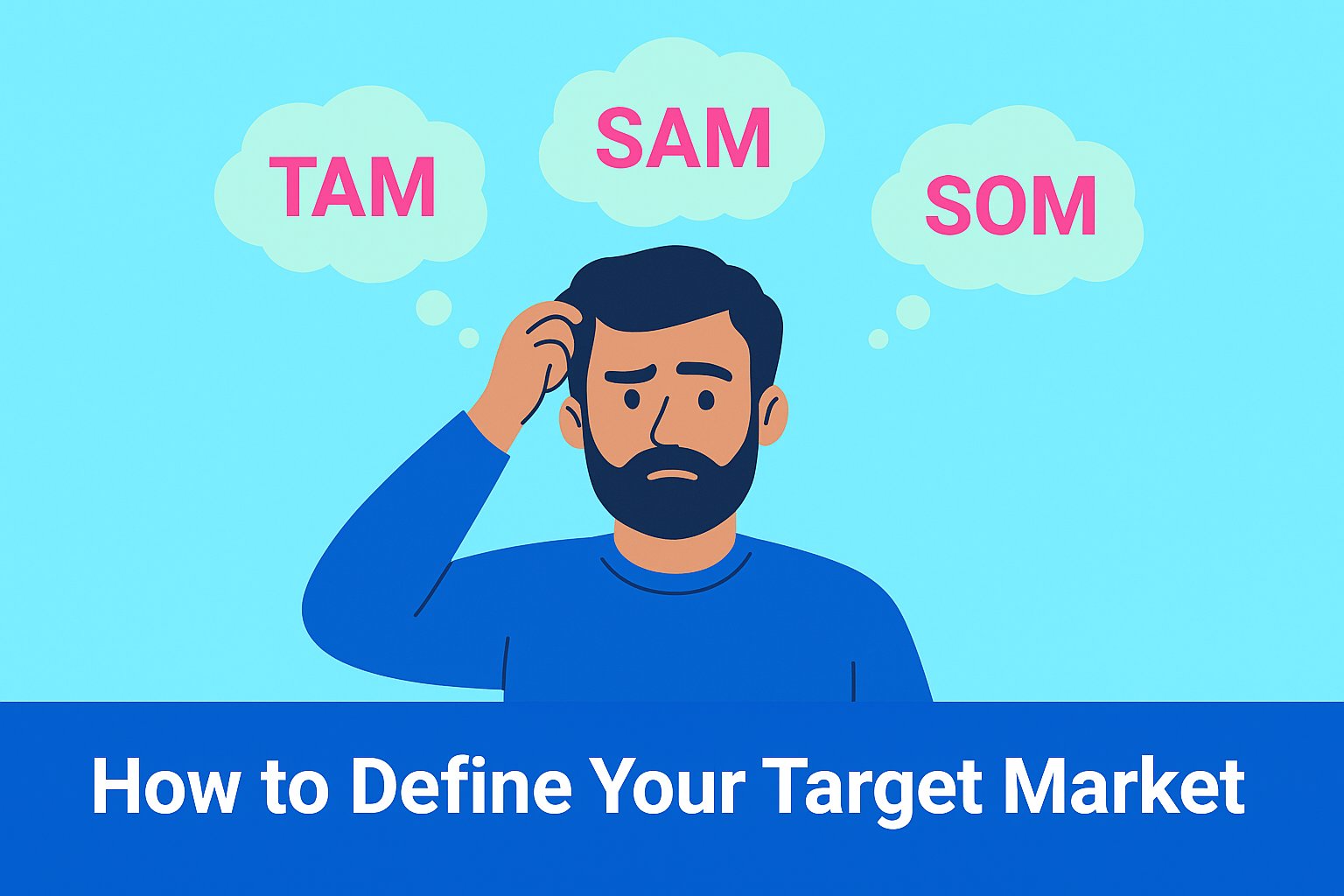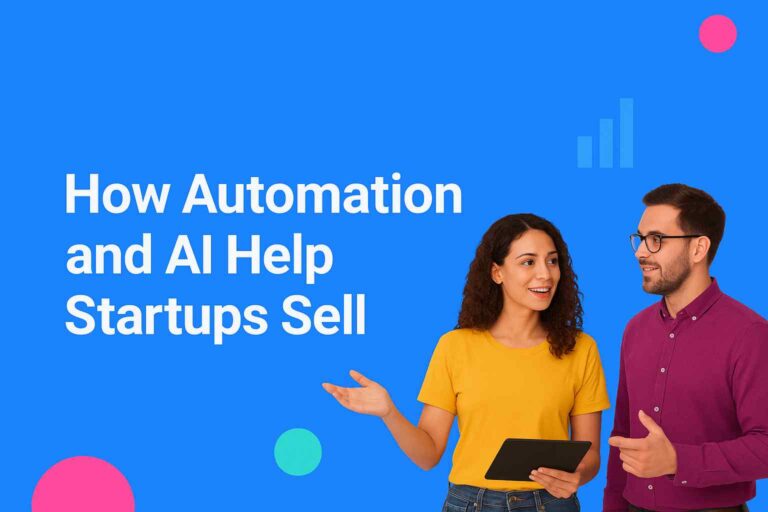Tech Founders Must Avoid Broad Markets…
After you’ve taken the plunge and decided to launch your B2B tech startup, one of the first things you must focus on as a founder is having a clearly defined target market. Market size is the total revenue potential for your solution. This is helpful for several practical reasons, including assessing business potential, pitching to investors and strategic planning. Defining your target market is one of the most important early tasks conducted by successful startups. A common mistake many founders and marketers make is trying to fit their technology solution to an unrealistically expansive market, thinking the bigger the addressable audience the better. Even if theoretically possible, this is not usually realistic or practical in the early growth stages, so a more targeted and pragmatic approach must be adopted.

Get Focused Early
A generically broad target market is ignorant of your existence and has little propensity to buy what you are selling now and in the immediate future. Further, it is difficult to convince prospects if your sales message is not compelling, lacking differentiation, personalisation or industry context. By never defining a target market and blindly chasing opportunities wherever they appear, you will waste time burning resources and energy with little return. Trying to be all things to all people, ultimately means you will mean nothing to anyone.
Equally bad, is having a loose market definition that no one fully understands or sticks to and even changes depending on the day of the week. Proper discipline, rigour and focus must be applied. It’s not unusual for startups to realise they have gone too broad and wide too early, only to trim back their horizons and get more focused later. When this happens, they find the execution of their market strategy gets more traction more quickly, as they can better position and message themselves and close real sales opportunities.
Broad Means Shallow, Niche Goes Deep
A broad market strategy scenario would need significant funding to promote your tech to the total available market. This approach would be at the expense of having high levels of relevance and would therefore result in low impact. For low-value transactional products, it may not matter as much, but for enterprise-class solutions, this would restrict progress. Having more intimate knowledge of your customers and their business challenges is a superpower and key differentiator, but you will struggle to do this if the businesses you target span many industries and segments.
Alternatively, if a clearly defined niche is targeted, you can go deep and dominate it before moving on to the next one, which is usually much more achievable. Going broad and shallow is likely to fail because a small startup without the required resources cannot execute a multi-market strategy for different target groups. So, identify your target market opportunity carefully and then give it total commitment and focus.
The More Targeted the Better
For clarity, if you have a lazy definition of your audience as “everyone and anyone,” then it is nothing more than wishful thinking, as this is a hope, not a tangible target audience. The more likely reality is that you offer a niche solution for a very specific audience, even if you haven’t realised it yet. Your offering will, therefore, have a very defined market segment, made up of a more modest and serviceable number of companies that experience common business challenges that your tech addresses better, faster and cheaper than has been done before.
They represent the prospects who would buy your solution right now and that you can feasibly reach by affordable means and convert into customers. This is the target group you need to establish, define and launch your solution to, if you are to turn your startup from a good idea into a sustainable business. It needs to be a big enough market to offer a healthy growth opportunity but relatively homogenous, allow you to scale with efficient and effective product development, marketing and sales.
Don’t Let Fear Guide Your Judgement
Founders tend to go too large too soon, due to the insecurity associated with having a small target market. We all think our tech is the latest and greatest thing, and everyone would buy it if only they knew it existed, but markets don’t work like that. This is a case where market size needs to be put into its proper context, as it’s what you can do for the customers you can reach and how much they are willing to pay for it that really counts. If you only need 10 new customers a year to be successful, then targeting a market with tens of thousands of companies, across international geographies, while competing directly with bigger established vendors, may not be necessary, or sensible.
A Vision of Success
It helps to have a vision of success and work backwards from what that looks like and what you must do to meet objectives along the way. Then you can overlay this information over the most aligned and relevant market, industry and segment of businesses you can easily reach and service. If you have a compelling offering and there are more than enough prospects to produce the leads you need to convert to customers, then this is a positive starting point. Remember, your initial target market is a launchpad to start and grow but does not limit your future market potential.
What is Your Ideal Customer Profile?
The reason you must have a well-defined target audience is so you can tailor your messaging and campaigns directly to them. This allows you to address the specific pain points experienced by a group and deliver outcomes that benefit them by using your solution. If you intend to present yourself as a thought leader, you must demonstrate industry expertise. Start by taking some time to identify and understand the qualifying criteria for your Ideal Customer Profile (ICP). You need to know this in some detail, so you can find and target the right companies in the most efficient and effective way possible.
Everything you do must be highly targeted and effective to have a chance of success. It is not uncommon to find that you only need a relatively small percentage of the market to achieve early success. The more focused and targeted you are, the more straightforward your go-to-market strategy will be. It can be daunting to view an entire addressable market, which may span many industries, segments and geographies. Whilst it is always good to know what the possibilities could be, this can be too big a challenge to take on with a small team in a small business. Taking a layered approach is the best way to give you a real understanding of what’s possible and the plans you can work towards.
Three Stages of Defining Your Target Market
You must have a clearly defined IPC to begin this process; in which case it’s possible to go straight to point three. Always start from the bottom up, rather than looking at global numbers that are unrealistic, can be misleading and may never be applicable. This process is designed to understand your Serviceable Obtainable Market (SOM), which will reveal the list of companies you will proactively target. Anything outside of that is a distraction, but in some cases, you may need steps one and two to help you drill down appropriately. Ideally, you will go straight to point three.
1. Total Addressable Market (TAM)
This is the entire market demand for your solution, calculated by the total number of potential customers times the annual revenue per customer. This is a theoretical number, as you may not be able to reach this entire audience, and your solution may not be appropriate for all of them. However, this may be a helpful starting point in the exercise of understanding your market before breaking it down into something meaningful and actionable. This number does not go into the pitch deck you present to investors, because it is not accurate. If you are a national company, do not include global statistics, and focus on the appropriate geography where you are located.
2. Serviceable Available Market (SAM)
This is the share of the TAM your business model has the potential to reach. This is a more faithful representation, but it is hypothetical and still beyond your capability, for now at least. This step begins to bring into view the “segment” of the market where you will need to focus, but there is still more work to do at this stage. The SAM is not the ideal audience because it is not well-defined enough.
3. Serviceable Obtainable Market (SOM)
This is the section of the SAM you can capture, in line with your growth targets, geography, capability and understanding of what an ideal customer looks like. This step reveals a much more focused and nuanced audience that you both understand in detail and can realistically market, sell to and service. In some cases, this niche may be all you need to focus on to achieve success, while in others it may be the start of a journey that will adapt and grow over time.
If you have a detailed enough understanding of who your target customer is, you may be able to start the process of calculating your SOM, regardless of whether you completed steps one and two, and quickly produce your refined target audience. Once you have this list, you may segment it further, identifying specific customers to target and sell to this year, next year and the year after that.
You may want to read: “Top 10 Ways Startups Overcome Market Resistance.”







